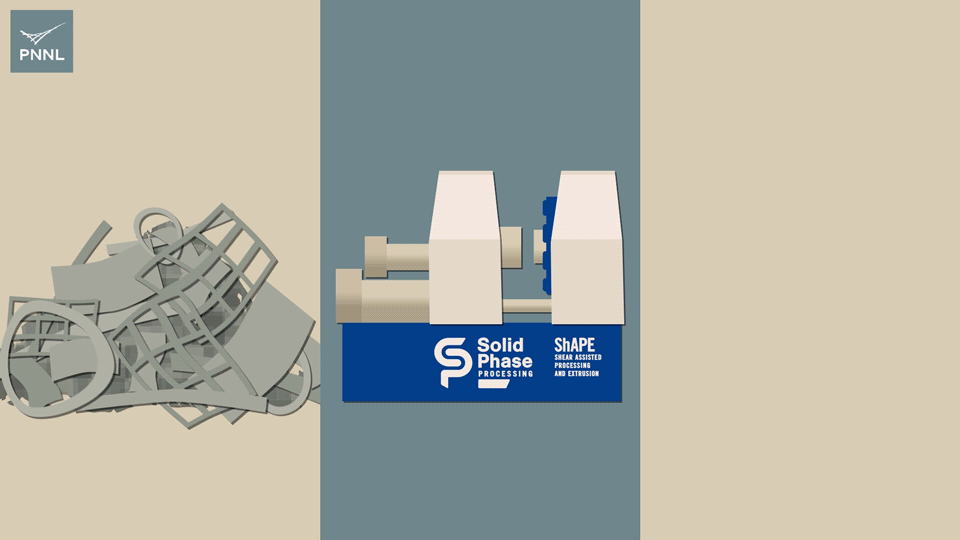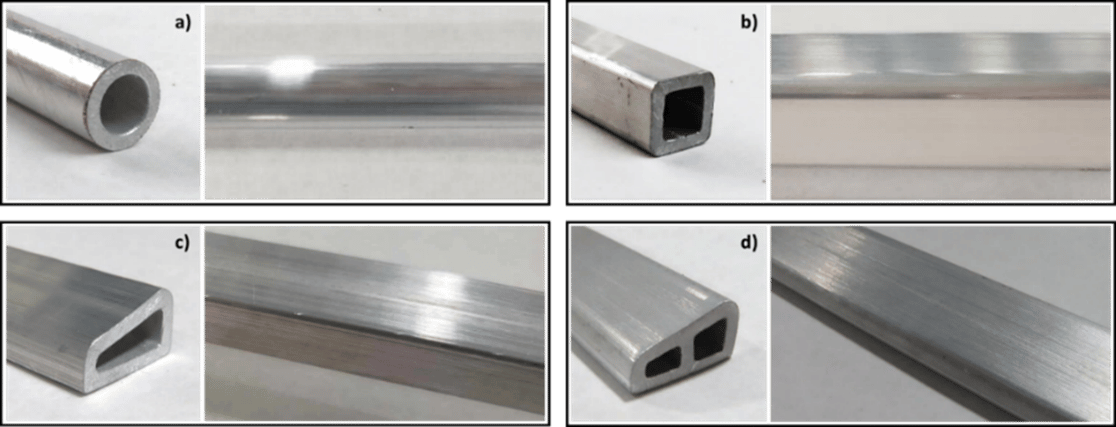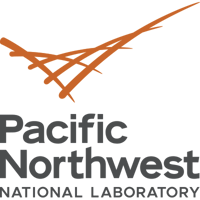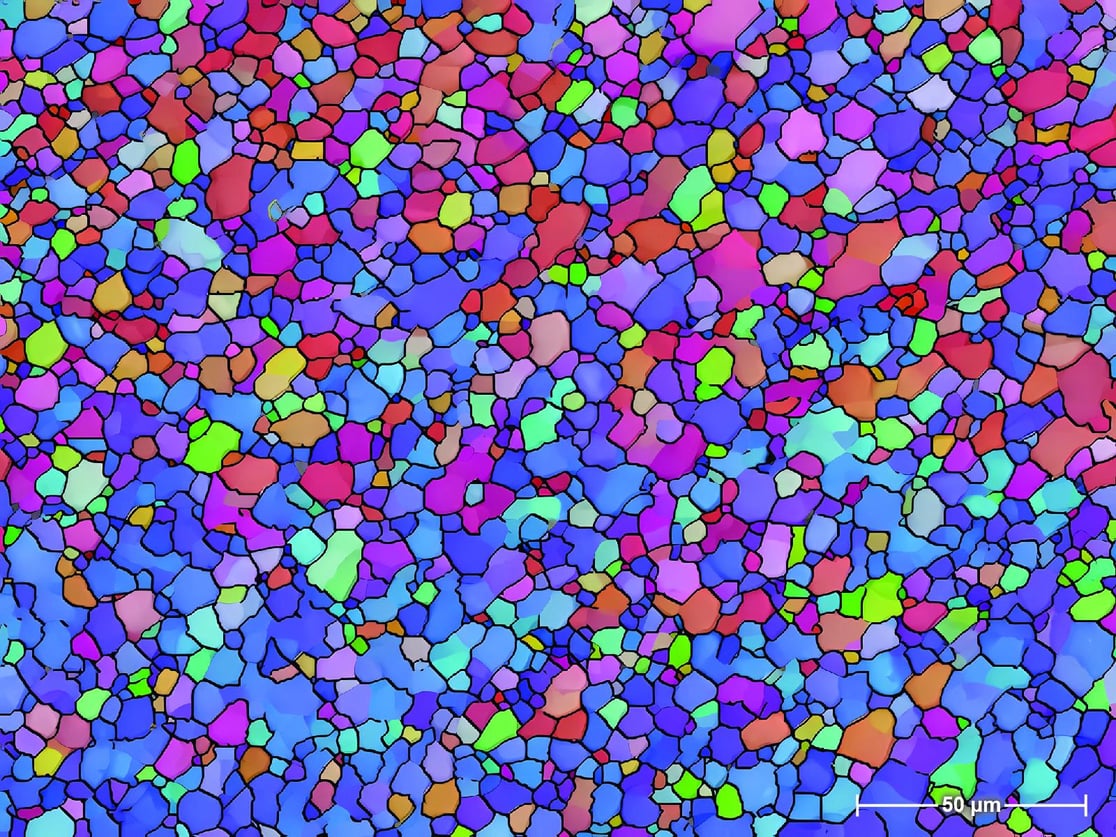PNNL Lab News Release:
The new manufacturing process produces high-strength aluminum vehicle parts that lower costs and are more environmentally friendly |
April 18, 2023 |
RICHLAND, Wash.—Scrap aluminum can now be collected and transformed directly into new vehicle parts using an innovative process being developed by the automotive industry, in particular for electric vehicles. Today, the Department of Energy’s Pacific Northwest National Laboratory, in collaboration with leading mobility technology company Magna, unveils a new manufacturing process that reduces more than 50% of the embodied energy and more than 90% of the carbon dioxide emissions by eliminating the need to mine and refine the same amount of raw aluminum ore. Lightweight aluminum can also help extend EV driving range.
This patented and award-winning Shear Assisted Processing and Extrusion (ShAPE™) process collects scrap bits and leftover aluminum trimmings from automotive manufacturing and transforms it directly into suitable material for new vehicle parts. It is now being scaled to make lightweight aluminum parts for EVs.
The most recent advancement, described in detail in a new report and in a Manufacturing Letters research article, eliminates the need to add newly mined aluminum to the material before using it for new parts. By reducing the cost of recycling aluminum, manufacturers may be able to reduce the overall cost of aluminum components, better enabling them to replace steel.
“We showed that aluminum parts formed with the ShAPE process meet automotive industry standards for strength and energy absorption,” said Scott Whalen, a PNNL materials scientist and lead researcher. “The key is that ShAPE process breaks up metal impurities in the scrap without requiring an energy-intensive heat treatment step. This alone saves considerable time and introduces new efficiencies.” |
 |
Automakers’ aluminum scrap transforms into new vehicle parts with the PNNL-patented ShAPE manufacturing process. Heat and friction soften the aluminum and transform it from rough metal into a smooth, strong uniform product without a melting step. (Animation by Sara Levine | Pacific Northwest National Laboratory) |
The new report and research publications mark the culmination of a four-year partnership with Magna, the largest manufacturer of auto parts in North America. Magna received funding for the collaborative research from DOE’s Vehicle Technologies Office, Lightweight Materials Consortium (LightMAT) Program.
“Sustainability is at the forefront of everything we do at Magna,” said Massimo DiCiano, Manager Materials Science at Magna. “From our manufacturing processes to the materials we use, and the ShAPE process is a great proof point of how we’re looking to evolve and create new sustainable solutions for our customers.”
Aluminum advantagesBesides steel, aluminum is the most used material in the auto industry. The advantageous properties of aluminum make it an attractive automotive component. Lighter and strong, aluminum is a key material in the strategy to make lightweight vehicles for improved efficiency, being it extending the range of an EV or reducing the battery capacity size. While the automotive industry currently does recycle most of its aluminum, it routinely adds newly mined primary aluminum to it before reusing it, to dilute impurities.
Metals manufacturers also rely on a century-old process of pre-heating bricks, or “billets” as they are known in the industry, to temperatures over 1,000°F (550°C) for many hours. The pre-heating step dissolves clusters of impurities such as silicon, magnesium or iron in the raw metal and distributes them uniformly in the billet through a process known as homogenization.
By contrast, the ShAPE process accomplishes the same homogenization step in less than a second then transforms the solid aluminum into a finished product in a matter of minutes with no pre-heating step required.
“With our partners at Magna, we have reached a critical milestone in the evolution of the ShAPE process,” said Whalen. “We have shown its versatility by creating square, trapezoidal and multi-cell parts that all meet quality benchmarks for strength and ductility.” |
 |
Extrusions made from AA6063 industrial scrap by ShAPE producing (a) circular, (b) square, (c) trapezoidal, and (d) two-cell trapezoidal profiles. (Image courtesy Scott Whalen | Pacific Northwest National Laboratory) |
For these experiments, the research team worked with an aluminum alloy known as 6063, or architectural aluminum. This alloy is used for variety of automotive components, such as engine cradles, bumper assemblies, frame rails and exterior trim. The PNNL research team examined the extruded shapes using scanning electron microscopy and electron backscatter diffraction, which creates an image of the placement and microstructure of each metal particle within the finished product. The results showed that the ShAPE products are uniformly strong and lack manufacturing defects that could cause parts failure. In particular, the products had no signs of the large clusters of metal—impurities that can cause material deterioration and that have hampered efforts to use secondary recycled aluminum to make new products.
The research team is now examining even higher strength aluminum alloys typically used in battery enclosures for electric vehicles.
“This innovation is only the first step toward creating a circular economy for recycled aluminum in manufacturing,” said Whalen. “We are now working on including post-consumer waste streams, which could create a whole new market for secondary aluminum scrap.”
In addition to Whalen, the PNNL research team included Nicole Overman, Brandon Scott Taysom, Md. Reza-E-Rabby, Mark Bowden and Timothy Skszek. In addition to DiCiano, Magna contributors included Vanni Garbin, Michael Miranda, Thomas Richter, Cangji Shi and Jay Mellis. This work was supported by DOE’s Vehicle Technologies Office, LightMAT Program.
The patented ShAPE technology is available for licensing for other applications. |
 |
Pacific Northwest National Laboratory draws on its distinguishing strengths in chemistry, Earth sciences, biology and data science to advance scientific knowledge and address challenges in sustainable energy and national security. Founded in 1965, PNNL is operated by Battelle for the U.S. Department of Energy’s Office of Science, which is the single largest supporter of basic research in the physical sciences in the United States. DOE’s Office of Science is working to address some of the most pressing challenges of our time. For more information, visit https://energy.gov/science. For more information about PNNL, visit PNNL's News Center. Follow us on Twitter, Facebook, LinkedIn and Instagram. |


